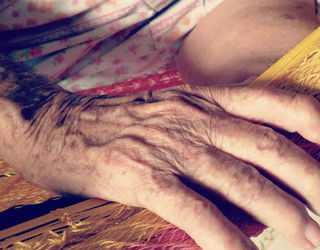Neuroscience
How Our Loved Ones Live on After Death
The afterlife is not just a religious concept. It is real and physical.
Posted December 29, 2019 Reviewed by Gary Drevitch

For most people, the holidays are a joyous occasion, but for my wife—whose beloved grandfather and grandmother both passed away around this time—Christmas and the New Year are tinged with melancholy.
My wife is not a very religious person, but she says that when she thinks about her grandparents, especially around this time of year, it feels like they are there with her in spirit. Knowing that I am a logical thinker with beliefs rooted in empiricism, she felt the need to explain herself: “I know it’s stupid, but believing that brings me comfort.”
She was surprised by my response, though. I told her, “Actually, she really is there with you, and she always will be.” She looked a bit puzzled by this answer, so I explained further. “You don’t need to be religious to believe that our loved ones live on after death. Their essence, or 'spirit,' persists in a physical and tangible way, as long as you do not forget them, and as long as you memorialize them with photos, videos, and other mementos that can be seen by others. They live on because 'soul' is just another word for their consciousness, which is a result of specific patterns of brain activity. And when you know that person so well—their beliefs, passions, idiosyncrasies, and how they see the world—then those neural patterns exist in your brain as well, and the brains of all those who were close to them."
This seemed to comfort her, and the best part was that it was all true. That night I gave her a book to read, a favorite of mine, with relevant passages highlighted. It was I am a Strange Loop, by the brilliant cognitive scientist and A.I. philosopher Douglas Hofstadter, which expanded on his previous book, the 1979 Pulitzer Prize-winning science classic, Godel, Escher, Bach: An Eternal Golden Braid.
Hofstadter wrote the book not long after his wife, Carol, passed away unexpectedly from a brain tumor while he was on sabbatical with their two children in Italy. In it, he tries to explain how the brain creates the elusive phenomenon known as consciousness, but it is much more than a book of science facts and concepts. His passages about his wife, and his reaction to her death, are particularly heart-wrenching. But in his sadness he finds solace, thanks to a consoling letter written to him by the great philosopher of mind, Dan Dennett, which presented the idea that Hofstadter would eloquently expand on:
Along with Carol’s desires, hopes, and so on, her own personal sense of “I” is represented in my brain, because I was so close to her, because I empathized so deeply with her, co-felt so many things with her, was so able to see things from inside her point of view when we spoke, whether it was her physical sufferings… or her greatest joys… or her fondest hopes or her reactions to movies or whatever... For brief periods of time in conversations, or even in nonverbal moments of intense feeling, I was Carol, just as, at times, she was Doug...
(So)…The name “Carol” denotes, for me, far more than just a body, which is now gone, but rather a very vast pattern, a style, a set of things including memories, hopes, dreams, beliefs, loves, reactions to music, sense of humor, self-doubt, generosity, compassion, and so on. Those things are to some extent sharable, objective, and multiply instantiatable, a bit like software on a diskette. And my obsessive writing down of memories, and the many videotapes she is on, and all our collective brain-stored memories of Carol make those pattern-aspects of her still exist, albeit in spread-out form — spread out among different videotapes, among different friends’ and relatives’ brains, among different yellow-sheeted notebooks, and so on. In any case, there is a spread-out pattern of Carolness very clearly discernable in this physical world. And in that sense, Carolness survives.
By “Carolness surviving," what I mean is that even people who never met her can see how it was to be near her, around her, with her — they can experience her wit, see her smile, hear her voice and her laugh, hear about her youthful adventures, learn how she and I met, watch her play with her small children, and so forth…
I keep trying, though, to figure out the extent to which I believe that because of my memories of her (in my brain or on paper), and those of other people, some of Carol’s consciousness, her interiority, remains on this planet. Being a strong believer in the noncentralizedness of consciousness, in its distributedness, I tend to think that although any individual’s consciousness is primarily resident in one particular brain, it is also somewhat present in other brains as well, and so, when the central brain is destroyed, tiny fragments of the living individual remain — remain alive, that is.
Also being a believer in the thesis that external memory is a very real part of our personal memories, I think that an infinitesimal sliver of Carol’s consciousness resides even in the slips of paper on which I captured some of her cleverer bon mots, and a somewhat larger (though still tiny) shard of her resides in the yellow lined notebooks in which I have, in the past few months of grieving, recorded so many of our joint experiences. To be sure, those experiences were already encoded in my own brain, but the externalization of them will one day allow them to be shared by other people who knew her, and thus will somehow “resuscitate” her, in a small way. Thus even a static representation on paper can contain elements of a “living” Carol, of Carol’s consciousness.”
In summary, if you want the spirit of your loved one to live on, think about them regularly, make shrines in their honor, tell your children or family about them in detail, and, if you want, make a website or blog that memorializes them. In doing so, you will be immortalizing them.




